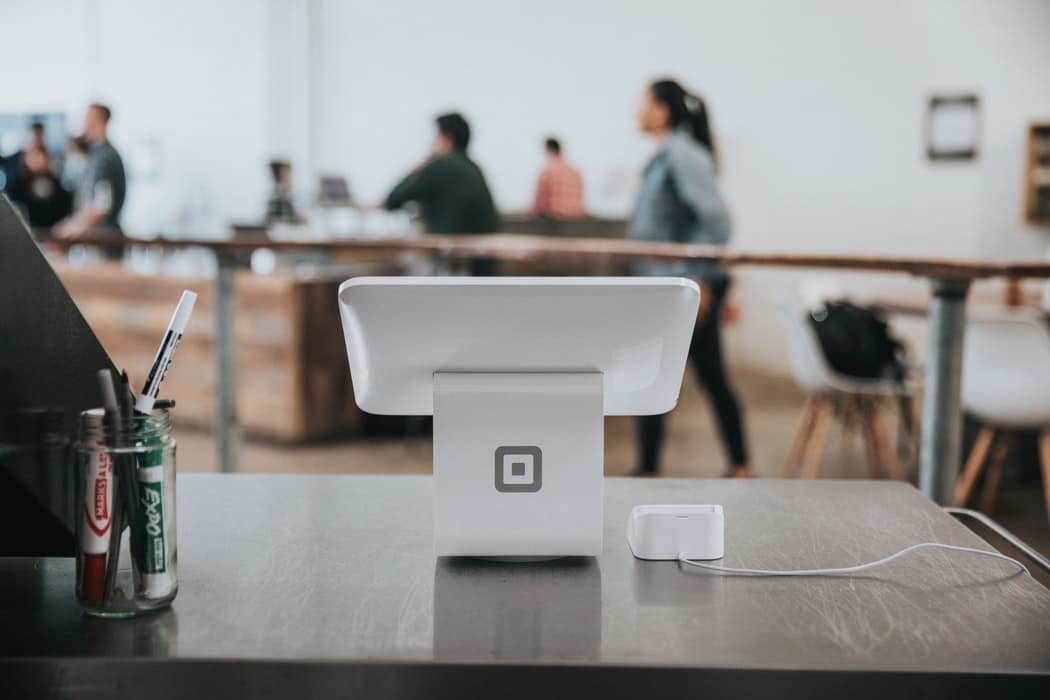Running a business is always challenging—which is one reason it’s such an exciting thing to do. There’s always plenty to think about, from your sales pitch and how you market your business to potential customers, and how you might find staff with the appropriate skills and experience.
Over the last couple of decades, the way we do business has changed dramatically, and this transformation is still ongoing. This has forced retail enterprises especially to adapt to the shifting environment at a pace, including introducing customer review strategies to help drive sales and revenue.
It isn’t just online retail that’s been forced to make radical changes. Bricks-and-mortar retailers, too, have had to adapt. They’ve had to transform the customer experience as a whole, making it as smooth and enjoyable as possible so that customers have an incentive to continue shopping in-store.
Customer experience has become a crucial factor in maximizing sales engagement. A critical aspect of this is having the right point of sale (POS) hardware. With a well-functioning, comprehensive POS system in place,—like Brightpearl’s integrated POS system for multichannel retailers—retailers can also keep a watchful eye on their inventory, which updates as sales are made. This helps them ensure that stocks are at the right level.
In this guide, we’ll start by explaining more about POS hardware—what it is and what it does—and the benefits of choosing the right devices for your business. Then, we’ll take a look at the must-have POS hardware your retail business shouldn’t be without.

What is POS hardware?
Perhaps you’re not much of a technological expert. Maybe you still haven’t mastered how to make a conference call on your Android phone. All this talk of POS hardware, then, might seem a little confusing. So, what does it all mean? It’s worth digging into this in more detail here.
Point of sale hardware is a physical device used by retailers to perform a particular transaction, such as a sale or product return. POS systems include both hardware and software. The software handles payment processing, helps keep track of labor costs, updates inventory, etc.
The point of sale system, as the name implies, is where a customer completes a purchase and makes their payment, i.e., at the checkout. More to the point, the POS system is the central hub of a retail business’s activity, combining sales, inventory management, and customer service.
The ultimate objective of being in business is to make a healthy profit, and there are many ways of achieving this. Just as digital marketing strategies for small businesses are instrumental for reaching new customers, choosing the right POS system—software and hardware alike—can go a long way to helping a large enterprise meet its profit goals.
This is because POS systems help to reduce operational costs and increase sales by facilitating smoother transactions, making the customer experience much more straightforward.
The benefits of choosing the right POS system
As we discussed earlier, running a retail business comes with more than its fair share of complexities. For example, there’s the matter of ensuring that your team has good customer service and communications skills. At a time when the customer experience is so vital, you can’t afford to neglect this.
Eliminating errors
One of the critical advantages of having the right POS system is that it can significantly reduce human error. However well-drilled your staff are, mistakes are inevitable—and, over time, they can mount up and cost you substantial amounts of money. This is particularly the case if you’re using manual methods to manage your inventory.
You have to consider this potential for error as part of your approach to risk management in general. POS hardware like barcode scanners, combined with the other inventory management features that come with POS software, can drastically reduce human error, thereby saving your business a lot of money.
Better responsiveness to customer needs
Another vital benefit of POS systems is that they can make your business more responsive to consumer needs. You can get a better idea of whether your existing sales strategies are working and how popular—or otherwise—individual products are proving to be among your customers.
This provides you with a solid base of data that can help you make better-informed business decisions. With all this information to draw on, you can adjust your sales and marketing strategies and improve your bottom line.
Essential POS hardware for your retail business
Now that we’ve outlined some of the critical benefits of having a POS system, we need to concentrate on POS hardware. Which devices do you need to get the most out of your POS system?
Customers’ needs have changed dramatically in recent years, and you need to choose POS hardware that allows you to deliver the kind of service they’ve come to expect. With that in mind, your retail business must have the following POS hardware.
Touchscreen monitors (or tablets)
Touchscreen technology has become an integral part of our everyday lives in recent years. From smartphones to iPads, we’ve all become accustomed to the ease and convenience of using touchscreen devices. They’re indispensable in retail too.
Your retail business must have a touchscreen interface in its front-of-house point of service kiosk. For maximum ease of use for customers to complete transactions, you could consider putting a payment terminal on customer display where it’s most accessible.
As so many POS systems operate via the cloud, a touchscreen device—whether a tablet or a smartphone—with internet connectivity should do the job. With a cloud-based POS system, all the relevant pricing, transactions, and inventory data are stored externally on servers based in third-party data centers.
Brightpearl’s all-in-one POS solution offers online connectivity, so if your in-store internet goes down, without ever having to set up an ethernet connection, you can still save product, inventory, and sales data locally until you have internet access again. At this point, it’s synced automatically.
Credit card readers
It’s often speculated that we might be on the verge of moving into an entirely cashless economy. While this still seems to be some way off, many still prefer to use cash, including older consumers and those who feel that physical coins and notes help them manage their finances better; there has been a sea change in consumer behavior.
Customers now expect to be able to pay for goods by credit or debit card, and if they can’t, they’re likely to take their custom elsewhere. The rise of near-field communication (NFC) or contactless payment, too, has been accelerated by the pandemic and is only likely to continue to grow in the years ahead.
This is why your business needs an EMV credit card reader. If you don’t give consumers the option of paying by card, this will inevitably be a major turn-off for many. Contactless and chip and PIN payments are an everyday part of the retail landscape, and if your business doesn’t offer them, you could lose customers to more resourceful competitors.
Barcode scanners
Barcodes have been a fixture of brick-and-mortar retail outlets for many years. While the retail landscape is constantly shifting, the humble barcode scanner has demonstrated its durability as a constant retail essential. With barcode scanners, it’s much easier to scan items and register transactions quickly, thereby speeding up proceedings for customers.
There have been some signs of change even here, however. There is a new generation of point of sale apps, which means that barcodes and, increasingly, QR codes can be scanned via a mobile device. If you’re dealing with a relatively high volume of sales, though, a hand-held barcode scanner is still the most practical option.
Another benefit of having a barcode scanner is that it saves staff the trouble of having to enter items into the system manually. We discussed human error earlier, and having a barcode scanner can help here too. It significantly reduces the risk of employees making mistakes when inputting product details during a transaction.
Cash drawers
A cash drawer provides retailers with a fixed location to store cash, which can be convenient. Some businesses are card-only, but most still need somewhere to place and organize coins and notes.
It also allows staff to accept cash payments and give change to customers, making it more convenient for those who still use physical tender.
Cash drawers can be connected to your POS terminal either wirelessly with Bluetooth functionality or, alternatively, via a USB cable. Some cash drawers can only open if they’re connected to a compatible receipt printer—which brings us neatly onto our next point!
Receipt printers
More and more frequently, receipts are being issued to customers via email, text message, or mobile apps. It’s not hard to see why this might be convenient for a lot of customers. Paper receipts are easily mislaid, and it can be a nuisance for customers to keep them in pockets and bags when going from shop to shop.
Nevertheless, many customers still prefer to have paper receipts to keep them for their own personal records. Others may charge purchases to their business expenses, and paper receipts are often more convenient for that purpose.
For these reasons, it’s still worth investing in a receipt printer. Some credit card readers may come with a receipt printer built-in, whereas others may require you to invest in a separate device.
Conclusion
For all the hype about the ongoing retail revolution, some firms still choose to use traditional cash registers. We mentioned earlier that many consumers, including but not solely older shoppers, still prefer to use cash rather than debit cards or virtual wallets. This is why a lot of businesses have yet to move to modern electronic POS equipment.
But the advantages of doing so are becoming ever more apparent, and that’s why more retailers are embracing electronic POS technologies. They allow for fast and secure transactions, which significantly improves the customer experience. A complete POS system also helps to boost customer confidence by providing robust and reliable protection against fraud.
With Brightpearl’s point of sale software, there are many ways to enhance the customer experience and foster long-term customer loyalty. You can create and manage loyalty programs, rewarding customers with incentives and offers, as well as allowing them to buy and redeem gift cards for online and in-store purchases. It also allows you to process refunds efficiently.
Hopefully, this guide has provided you with some valuable pointers to work out which POS hardware your retail business needs. Not only will your business benefit, but your customers will too—and, at the end of the day, that’s what really counts.









